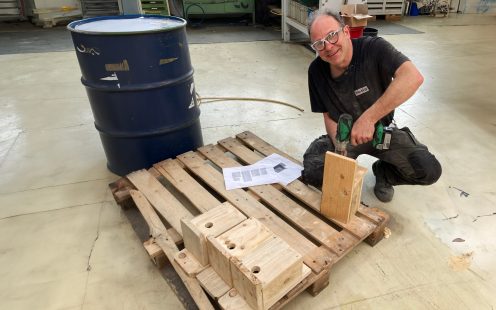Leading by Example: Corporate Biodiversity Program at Pipelife Delivers First Results
Alongside circular economy and climate protection, biodiversity is integral to Pipelife's self-imposed ESG goals and sustainability strategy. As part of wienerberger, Pipelife has been participating in the Corporate Biodiversity Program since 2021, implementing various targeted nature-preservation and restoration actions in all its production sites. The Program sets an ambitious goal to enhance the biodiversity potential in the unsealed areas of each plant while engaging and empowering the company's employees throughout the process.
.jpg)
Why Biodiversity Loss Matters, And Can We Averse it?
According to the European Commission data, more than 80% of Europe's habitats, including wetlands, rivers, forests, grasslands and marine ecosystems, are in poor conservation status. The staggering loss is not just an environmental problem but also increases risks to Europe's food security and makes the continent more vulnerable to extreme climate events, such as flooding.
In June 2022, the European Commission adopted the proposal for a Nature Restoration Law — an integral part of the EU's biodiversity strategy for 2030 to protect nature and reverse the degradation of Europe's ecosystems. The Law aims to reverse the decline of pollinator species, increase green spaces in Europe's cities, and preserve and restore at least 20% of EU land and sea ecosystems by 2030.
The Law was narrowly approved by the European Parliament in February 2024, yet it still hasn't been adopted due to the lack of Member State support at the European Council. The delay, coinciding with the 2024 European Parliament elections, leaves the future of Europe's ecosystems in question.
.jpg)
.jpg)
What Is wienerberger's Biodiversity Program?
While there is still no binding biodiversity regulation at the European level, wienerberger— a major European manufacturer of building materials — is leading by example. Already in 2021, wienerberger launched an unprecedented Corporate Biodiversity Program at the company's more than 200 production sites, aiming to increase the local variety of wildlife and ensure climate adaptation groupwide. All 24 Pipelife's production sites, as part of wienerberger, have embraced the Program.
The Corporate Program covers various nature-preservation aspects — from increasing the presence of native plant species to implementing sustainable water management practices and from soil health restoration to involving local employees and communities in awareness campaigns and initiatives.
To ensure the local biodiversity status is accurately assessed, baseline monitoring is carried out by an independent, certified partner at each production site. During the monitoring visit, the numbers of observed species and quantities of birds, butterflies, bees and hoverflies are recorded.
After establishing the baseline, a standardized biodiversity monitoring process is repeated three times per year, following the exact same route and counting the specimens of the same species. The checkups are performed by specially trained local employees called biodiversity ambassadors, and the company aims to train more than 400 ambassadors by 2026.

.jpg)
First Results in and Next Steps
Fully in line with the EU's biodiversity strategy, wienerberger's own Biodiversity Program remains innovative in its reach and commitment to achieving tangible, measurable results year by year. The Program's main target is to maximize the biodiversity potential in unsealed areas at each production site while involving and empowering the company's employees in the process.
The examples of biodiversity actions implemented involve transforming grass lawns into wildflower meadows, forming and restoring blue spaces, planting local species of fruit-bearing trees and bushes, setting up bird boxes and insect hotels, as well as creating hedges, green walls and roofs within the production site areas. Several of the transformed greenspaces also serve as recreational areas for local teams.
While creating and restoring biodiverse ecosystems is a slow process, the first monitoring results available are promising. In some Pipelife sites, such as Seneffe, Belgium, biodiversity increases of up to 50 times have already been observed. The company’s ambitious groupwide KPI is a 10% fauna increase by 2026.
"We are a frontrunner in the sense that we are championing biodiversity at our production sites," says Rena De Mey, Biodiversity Project Leader at Wienerberger. "There are companies waiting for future regulations or just greening their headquarters. But we are already making a real difference at all our sites for all our employees — and it's also a difference for the ecosystems and communities they live in."
Find out more about
Get in Touch
Please choose your preferred way to get in contact with us. We will get back to you as soon as possible.
Fill our form